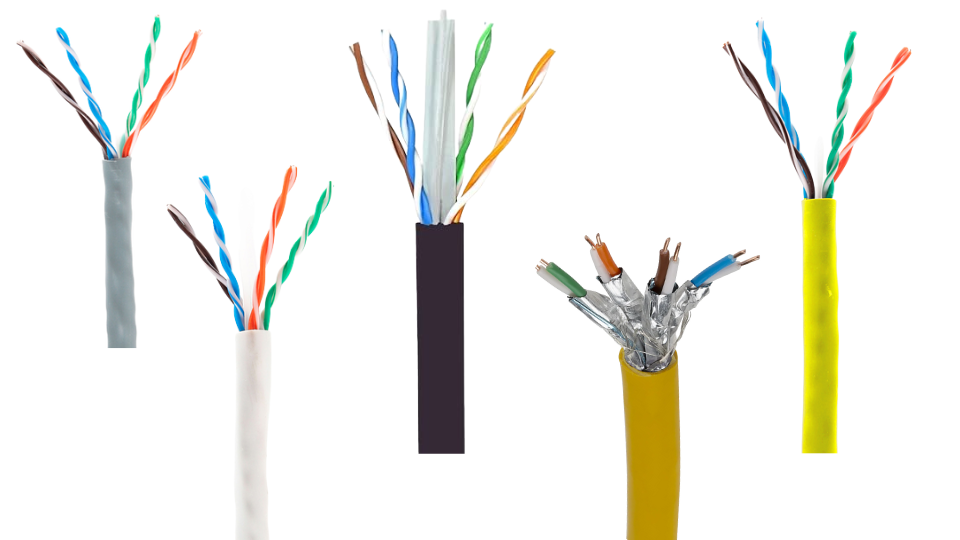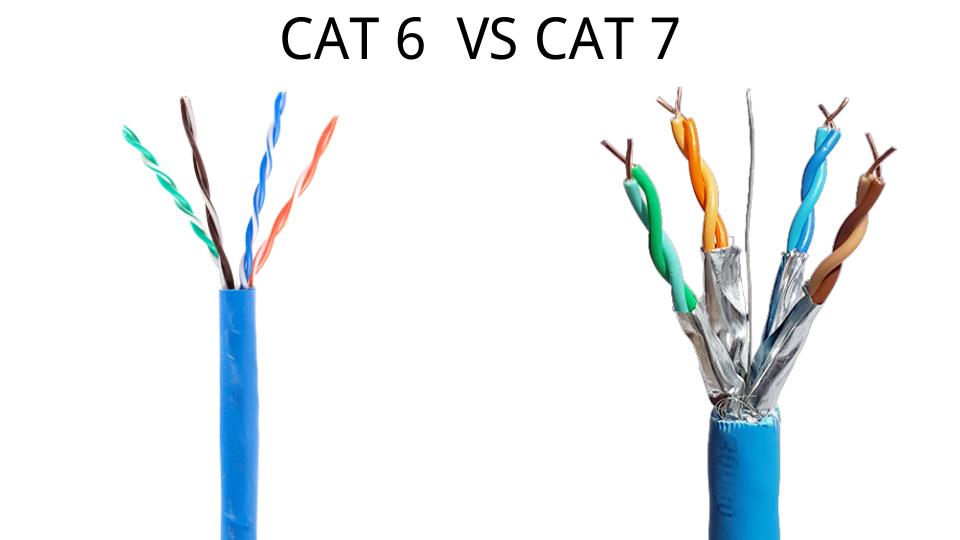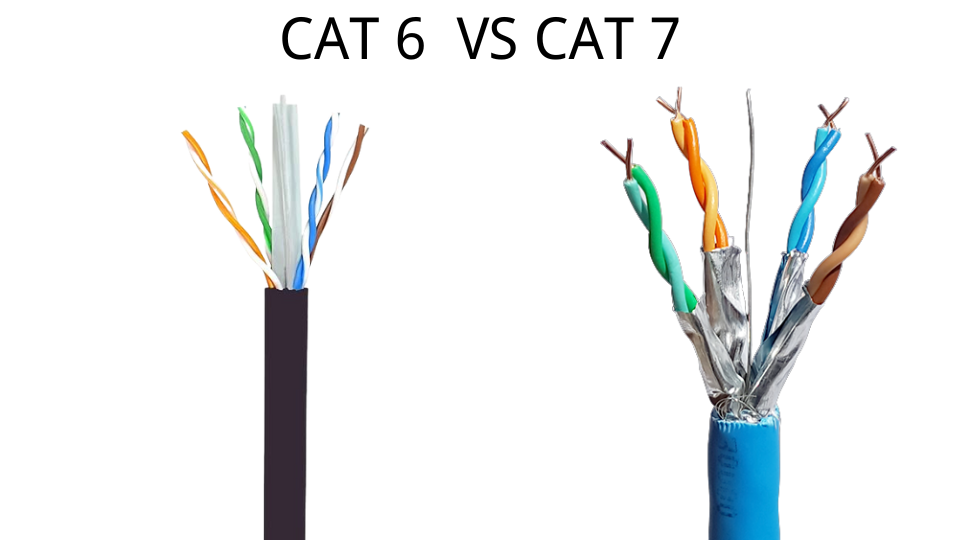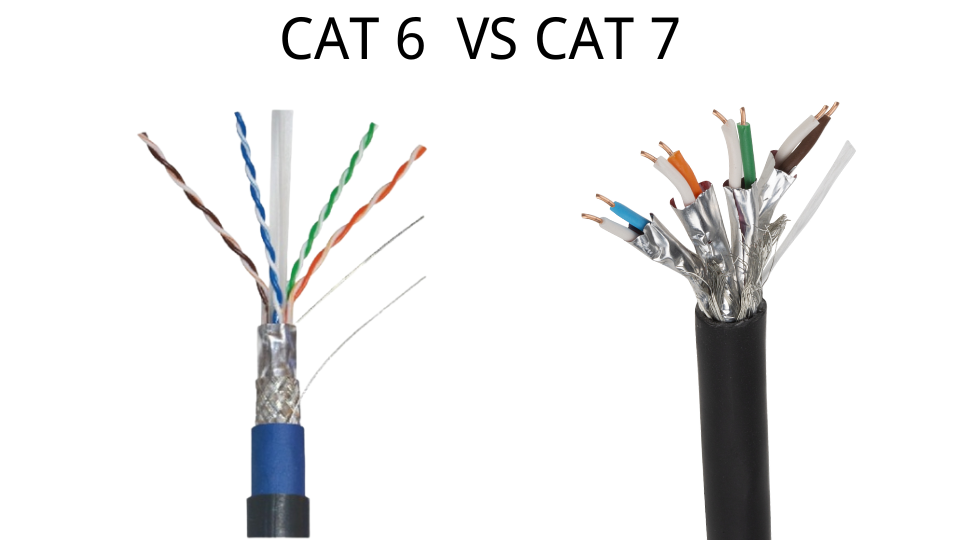Is your network struggling with slow speeds? Could it be your cables? Let’s fix that.
Choosing the right Ethernet cable is crucial for network performance. Cat 6 offers reliable gigabit speeds for most home and office needs, while Cat 7 provides faster speeds, better shielding, and handles higher bandwidth for future-proofed networks and demanding applications. Your choice depends on your specific speed and shielding requirements.

Navigating the world of network cables can feel like a maze, but understanding the differences between Cat 6 and Cat 7 is easier than you think. Let’s break down these options to help you make an informed decision for your unique network needs.
Are Cat 6 and Cat 7 Connectors the Same?
Are you wondering about compatibility? You might be surprised.
No, Cat 6 and Cat 7 cables do not typically use the same connectors. Cat 6 cables use the familiar RJ45 connector, while Cat 7 cables are designed for GG45 or TERA connectors, which provide superior performance and shielding. However, Cat 7 cables can sometimes be terminated with RJ45 connectors for backward compatibility, but this will limit their full performance.

When I first started in the non-woven industry, I faced many compatibility challenges with raw materials. It’s similar to how different cable types have different connectors. For instance, Cat 6 mainly uses the RJ45 connector. This is the standard plug you see on most Ethernet cables. It has eight pins and is very common. However, Cat 7 cables are designed for a newer type of connector. These are usually the GG45 or TERA connectors. These connectors are built to handle higher frequencies and offer better shielding. This extra shielding is key to Cat 7’s performance.
So, why would you ever use an RJ45 with a Cat 7[1] cable? You might do this for backward compatibility. This means you can plug a Cat 7 cable into older equipment designed for RJ45. But there’s a downside. When you use an RJ45 connector with a Cat 7 cable, you won’t get the cable’s full speed benefits. It will perform more like a Cat 6[2] cable. Jacky, a procurement expert, once told me about similar challenges in sourcing industrial wipes. He said, "You can use a general-purpose wipe for a specialized job, but you won’t get the best performance." It’s the same idea here. For the best performance from a Cat 7 cable, you should use its intended GG45 or TERA connector. Here’s a quick look at the connector differences:
| Feature | Cat 6 Cable | Cat 7 Cable |
|---|---|---|
| Standard Connector | RJ45 | GG45 or TERA |
| Pins | 8 | 8 (RJ45) or 12 (GG45/TERA) |
| Shielding | Often U/UTP (unshielded), F/UTP | S/FTP[3] (individually shielded pairs) |
| Backward Comp. | Fully compatible with Cat 5/5e | Can be terminated with RJ45 for backward compatibility[4], but performance is limited |
| Use Case | Home networks, small offices | Data centers, high-interference environments[5] |
This table shows that while you can make them work together in some cases, it’s best to use the correct connectors to unlock each cable’s full potential.
What is the Difference Between CAT6 and CAT7?
Confused about which cable is better? Let’s demystify it.
The main differences between Cat 6 and Cat 7 cables lie in their speed, bandwidth, and shielding. Cat 6 supports up to 10 Gigabit Ethernet over shorter distances and 250 MHz bandwidth, while Cat 7 can handle 10 Gigabit Ethernet over longer distances with better performance, and up to 600 MHz bandwidth, thanks to its superior shielding.

When I help clients choose the right non-woven fabric, I always explain that different applications require different material properties. It’s the same with network cables. Cat 6 and Cat 7 cables are built with different capabilities. Cat 6, for instance, is a solid choice for most home and small office networks. It supports speeds of up to 1 Gigabit Ethernet (1 Gbps) over distances up to 100 meters. For 10 Gigabit Ethernet[6], its performance is limited to about 55 meters. This cable has a bandwidth[7] of 250 MHz, meaning it can carry a good amount of data traffic. Jacky, the procurement manager, often looks for similar balances in cost and performance when sourcing materials. He knows that sometimes, "good enough" is perfectly fine.
Cat 7, on the other hand, is a step up. It’s designed for higher performance and future-proofing[8]. It also supports 10 Gigabit Ethernet, but over longer distances and with greater stability. Where Cat 7 truly shines is its greater bandwidth, rated at 600 MHz. More importantly, Cat 7 cables feature extensive shielding[9]. Each pair of wires inside a Cat 7 cable is individually shielded, and then the entire cable is wrapped in another layer of shielding. This S/FTP (screened/foiled twisted pair) design significantly reduces crosstalk[10] and electromagnetic interference[11] (EMI). This is critical in noisy environments, like data centers[12] or industrial settings, where reliable data transmission is paramount. This superior shielding is a major factor in its higher cost, but it pays off in performance and reliability.
| Feature | Cat 6 Cable | Cat 7 Cable |
|---|---|---|
| Max Speed | 1 Gbps (up to 100m); 10 Gbps (up to 55m) | 10 Gbps (up to 100m) |
| Bandwidth | 250 MHz | 600 MHz |
| Shielding | UTP (unshielded) or F/UTP (overall foil) | S/FTP (individual pairs foiled, overall braid) |
| Price | Lower | Higher |
| Best Use Case | Home, small office networks | Data centers, high-interference environments, future-proofing |
This detailed breakdown shows why Cat 7 handles more demanding tasks.
Is Cat7 Faster Than Cat6?
Are you chasing quicker downloads? Let’s check the speeds.
Yes, Cat 7 cables are technically faster and more capable than Cat 6 cables, mainly due to their higher frequency support and superior shielding. While both can transmit 10 Gigabit Ethernet, Cat 7 can do so more reliably over longer distances and has the potential to support even higher speeds up to 40 Gbps for short runs.

When I consider a new production line for a custom non-woven solution, I think about its potential future capacity, not just its current output. It’s similar with Cat 7 cables. While today’s common applications might not fully utilize Cat 7’s raw speed potential, it’s built for future demands. Cat 6 cables are excellent for current gigabit networks. They reliably deliver 1 Gbps and can even push 10 Gbps over shorter runs. This is more than enough for streaming 4K video, online gaming, and most business operations. Jacky often tells me that for most manufacturers, a reliable 10 Gbps backbone is perfectly fine. "Why overspend on something you won’t fully use?" he asks.
However, Cat 7 is designed with an eye on the future. Its 600 MHz bandwidth allows it to transmit data at 10 Gbps over the full 100-meter length. More critically, its robust shielding minimizes signal degradation, which is key for maintaining high speeds in environments with lots of electrical noise. Some reports suggest Cat 7 can even support 40 Gbps over shorter distances, specifically up to 50 meters, making it a strong contender for future data centers and cloud infrastructure. Technologies like Wi-Fi 6E/7, 5G backhaul, and Industrial IoT (IIoT) demand incredibly robust and high-bandwidth networks, and Cat 7 is better equipped to handle these emerging requirements. So, while your current setup might not show a huge speed difference, Cat 7 offers better future-proofing and reliability for demanding scenarios.
| Speed Aspect | Cat 6 Cable | Cat 7 Cable |
|---|---|---|
| 1 Gbps Scope | Full 100m | Full 100m |
| 10 Gbps Scope | Up to 55m | Full 100m |
| Higher Speeds | No defined standard beyond 10 Gbps | Potential for 40 Gbps (up to 50m) |
| Reliability | Good for typical environments | Excellent, especially in noisy environments |
| Future-Proof | Limited for next-gen bandwidth demands | Better for Wi-Fi 6E/7, 5G, IIoT, data centers |
This table illustrates Cat 7’s inherent advantages for future, more intensive applications.
Conclusion
Choosing between Cat 6 and Cat 7 depends on your current needs and future plans. For most homes, Cat 6 is sufficient, but Cat 7 offers superior shielding and bandwidth for demanding, future-proofed networks in noisy environments.
